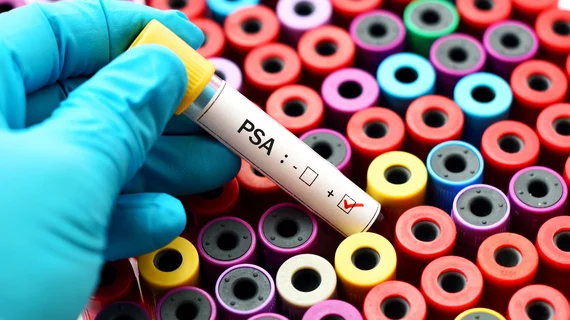Using MRI guidance during radiation therapy treatments could decrease the number of side effects for patients with prostate cancer. That’s according to the results of an ongoing Phase 3 study from UCLA Jonsson Comprehensive Cancer Center.
High-dose stereotactic body radiotherapy (SBRT) delivers fine-tuned radiation doses to precisely target tumors. This helps clinicians destroy the cancerous cells of the tumor, while also sparing the surrounding tissue from damage.
SBRT is commonly used in the treatment of prostate cancer. Though it is incredibly effective, it is not without side effects (also called toxicities). After treatment, it's not uncommon for men to experience frequent urination, burning sensation while urinating, bloody urine, urinary incontinence, diarrhea and abdominal pain, among other things.
In the past, CT has been used during these treatments to help deliver high radiation doses with great accuracy, but more recently researchers have gained interest in utilizing MRI. The researchers at UCLA hypothesized that MRI-guided radiotherapy would significantly reduce the planning margins needed for radiation.
To test their theory, the experts randomly assigned men with prostate cancer who were undergoing SBRT to either a CT-guided or MRI-guided group. They then compared the treatment side effects of each group over a span of 90 days.
Out of the first 100 patients who received treatment, less than half in the MRI-guided group experienced grade 2 genitourinary (GU) toxicities (dysuria, hematuria, etc.). Additionally, in that same group, there were no reported gastrointestinal (GI) toxicities (diarrhea, abdominal pain, distention, etc.), compared to the CT-guided group, of which 14% experienced GI side effects.
“MRI-guidance offers a statistically significant reduction in acute grade GU as well as GI toxicity for prostate SBRT,” said Amar Kishan, MD, vice chair of clinical and translational research in the Departments of Radiation Oncology and Urology at UCLA Health Jonsson Comprehensive Cancer Center.
The team originally planned to enroll 300 men for the study, but after the decisive results of the first 100 patients, they were able to cut that projection in half.
“We are extremely optimistic by what we’re seeing and hope this technology will soon begin to offer men undergoing radiotherapy for prostate cancer better outcomes,” Kishan said.
The results of this study are set to be presented at the 2022 ASCO Genitourinary (GU) Cancers Symposium in San Francisco, California. You can view the full news release here.

